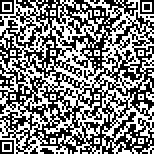下载中心
优秀审稿专家
优秀论文
相关链接
摘要

本文旨在研究基于地块数据约束的深度学习模型的分类特征表示方法,以识别不同作物在不同时相上光谱差异从而对作物类型进行分类。通过Google Earth Engine平台获取作物生育期内全部Landsat 8影像,利用其质量评定波段完成研究区无云时相及区域上的地块统计,提取地块级别的各波段反射率均值按照时相顺序及波长进行排列,构建波谱、时相二维特征图作为该地块的抽象表示。通过构建相对最优的卷积神经网络CNN(Convolutional Neural Network)结构完成对特征图的分类,从而完成对地块的分类。构建CNN模型并不需要手工特征和预定义功能的需求,可完成提取特征并遵循端到端原则进行分类。将该模型的分类结果与其他最为常用机器学习分类器进行了比较,获得了优于常用遥感分类算法的分类精度。结果表明地块数据的加入可以有效的缩减计算规模并提供了准确的分类边界。所提出得方法在地块特征表示及作物分类中具有突出的应用潜力,应视为基于地块的多时相影像分类任务的优选方法。
Crop planting area and its spatiotemporal distribution information are crucial for agricultural management, structural adjustment of the planting industry, national food security, and other fields. Remote sensing can extract crop planting information quickly. However, a large amount of ground survey information, expert knowledge, and manual correction operation after classification are needed to meet actual production needs. Using remote sensing and existing geographic information data for intelligent information extraction is the future development trend. The purpose of this study is to investigate the classification representation method of the deep learning model on the basis of the constraints of field parcel data. Multi-source heterogeneous data are linked by constructing representation. The method can identify the spectral differences of different crops in different phases and classify the crop types.The study area is in the eighth division of Xinjiang Production and Construction Corp. The platform of Google Earth is used to obtain all Landsat 8 images during the crop growth period of the research area in 2019. The image data and their quality assessment band on GEE are utilized to determine the statistical or estimated values of phases in the study area. Then, the average reflectivity of each band of the extracted block level is arranged in accordance with the time-phase sequence and wavelength, and a plot representation of the spectrum and time-phase two-dimensional properties is constructed. The construction of land plot representation realizes the connection of geographic information and remote sensing data and makes the application of deep learning in crop remote sensing classification possible. The completed plot representation is used to construct and train a Convolution Neural Network (CNN) model.A step-by-step optimization process is implemented to search for the best combination of super parameters and various types of layers. Construction of a relatively optimal CNN model is obtained, and classification of the constructed feature map is carried out based on this model to complete the classification of the research area in 2019. We obtain a crop distribution map whose resolution is much higher than that of the remote sensing image. Moreover, the overall accuracy of the CNN model reaches 93.04%, and the kappa coefficient is 91.09%. The results of nine kinds of crop classification are good. After thousands of rounds of data learning, the proposed method exhibits lower classification error fluctuation and higher stability than other machine learning algorithms.The research object is plot representation, which is the abstract expression of plot planting information. It can be used as the standard input of the deep learning model. Through the construction of plot representation, crop classification can be indirectly identified by remote sensing. The proposed method has outstanding application potential in land feature representation and crop classification and should be regarded as an optimal method for multi-temporal image classification tasks based on field parcel data. The method can be used as a reference in the application of deep learning in remote sensing.

